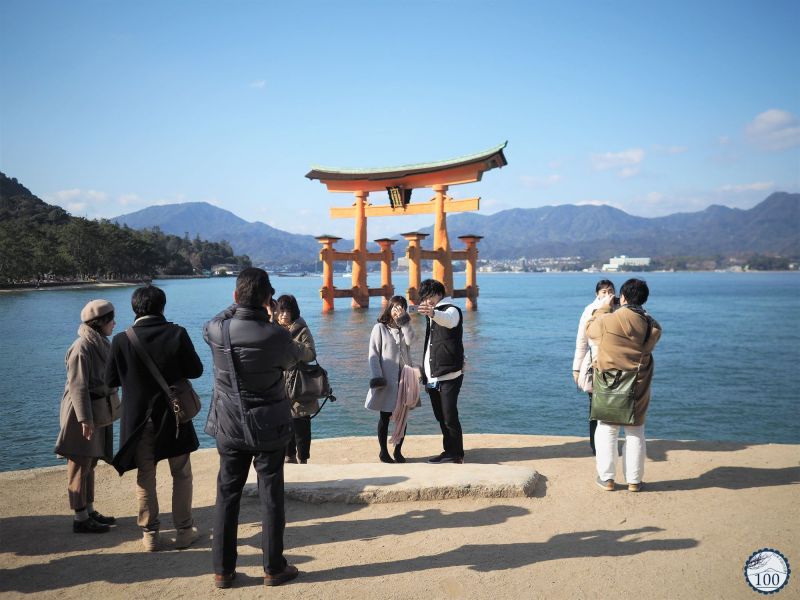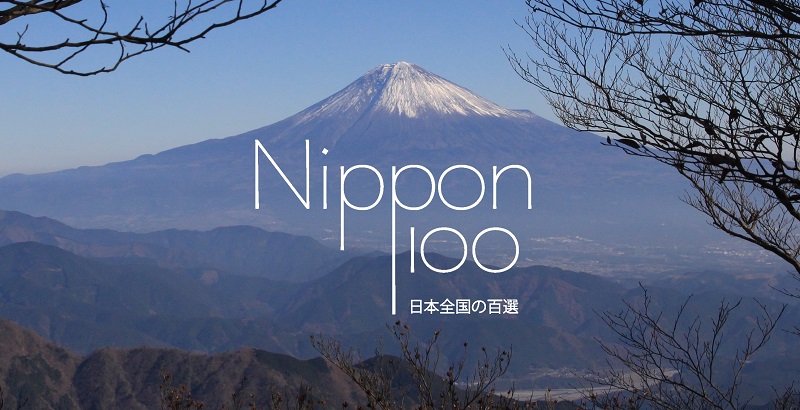This ranking is Japan’s first in history. The Three Views of Japan (also labelled « Three Classical Views » or « Three Most Beautiful Views », Nihonsankei in Japanese) are three iconic landscapes from Edo period (1603-1868), that had been elected by a scholar named Hayashi Razan in 1643. They are:
- Amanohashidate, in Kyoto’s prefecture;
- The floating torii of Miyajima, in Hiroshima prefecture;
- Matsushima bay, in Miyagi prefecture.
You’ll find here some insights about these views and a concise guide that sums up what you should know before visiting them.
Last update on May the 8th, 2018.
The Three Views of Japan: Background
During Edo period, while the country is running an severe isolation policy, Japanese scholars are at least free to travel in the newly peaceful Japan. They are thus able to enjoy its many natural wonders, and as a result, many landscapes are now to be found in national arts and literature.
In Tohoku, which became our favorite area in Japan, Hayashi Razan first, and then the traveling poet Basho were able to find new landscapes, and were able to overcome the former references inherited from Chinese classical litterature.
As for us, we have been through the Three Views of Japan in 2017, for the Nippon100 challenge, as they are all to be found in the list of the 100 Heisei Landscapes, the most iconic views of contemporary Japan according to the Japanese themselves. What interested us greatly was that, among the Three Views, only Miyajima’s torii is well known from foreign travelers, much more than the Heaven’s Bridge of Amanohashidate and the Matsushima Bay.
Facts and itineraries around the Three Views of Japan
Here is all you need to know to explore the three most iconic landscapes of Japan’s travel history.



1. Amanohashidate, aka the « Heaven’s Bridge »

In Kyoto’s prefecture, but faraway from the former imperial city, the first of the Three Views of Japan is a 2.5 km sandbar, which is enclosing the Asoumi Sea in a dead end of Miyazu Bay. Heaven’s Bridge, according to the translation of ama-no-hashidate is two hours away from Kyoto or Osaka.
Observatories are available at both ends of the stunning sandbar that you can cross either walking or by bike. One of them houses a small old-fashioned amusement park, named Amanohashidate Viewland, which is reachable using a chair lift without guard-rail. (see the above pic).
Several temples and shrines are around, including the Motoise Kondo shrine. The place is home of an interesting record in Japan: the Shinto priest family living here owns the country most ancient genealogical tree — a 82 generations National Treasure!



 |
 |
Our opinion on Amanohashidate:
The sandbar, officially a tombolo according to science, is a really special view, worth the trip to Miyazu area. The journey is an easy one, a convenient day trip from Kyoto that will allow you to forget the big crowds. Once you reach Kyoto by the Sea, be sure to visit also the neighboring Ine with its houseboats. Learn more about the Ine-no-funaya here.

How to get to Amanohashidate?
Reaching Amanohashidate is not too bad from Osaka or Kyoto. But even though the first of the Three Views of Japan is in the same prefecture as the former capital, you will still need two hours one way.
From Kyoto Station, take the JR Hashidate line and then the Tango Relay at Fukuchiyama (about 4700 yens one way). If you are departing from Osaka, take the JR Kounotori line and catch the same Tango Relay in Fukuchiyama (about 5580 yens). You may appreciate to pay a visit to Fukuchiyama, if you have some time left, the city owns a great hill castle.
Traveling by bus is also possible, from Kyoto (around 2600 yens for a 2.5 hours journey using Tango Kairiku-kotsu buses, booking is available in English on that website) or Osaka (1870 yens from OCAT in Namba to reach first Fukuchiyama, before catching the Tango Relay).
2. Miyajima and the floating torii

It is thanks to Itsukushima island (commonly known as Miyajima) than the Nihonsankei, the Three Views of Japan, is often introduced to foreign travelers. There, and in many guidebooks, the classical ranking is often quoted, yet the two others views are rarely described at the same time.
Almost all the tourists visiting Hiroshima city are crossing the small strait between Honshu and the island, to explore its shrines and temples and admire the sika deers (even though their health condition is worst than Nara’s one).
The floating torii of Itsukushima shrine is a gorgeous structure standing on its own, thanks to its weight. The sight is beautiful from the island’s seashore when the tide is high. And when it’s low, it is then possible to reach it by foot — allowing the travelers to discover the huge gate on another side.





Our opinion on Miyajima
It is difficult not to like the second of the Three Views of Japan! Except maybe for one detail: the crowd. The floating torii is ridiculously famous and many many people are discovering it daily – and almost all travelers during their first time in Japan. Our advice to enjoy more quietly Miyajima: book a night on the island. You will then be able to enjoy the evening and early morning there, which are both (relatively) more peaceful.

How to get to Miyajima?
Miyajima is really easy to reach from Hiroshima City, which also explains why the island is so crowded. To get there, you should take a ferry for a 10-minutes journey (180 yens one way), from the piers located close to Miyajimaguchi station, on the JR Sanyo line. One of the two ferry companies is related to JR, which means that it is possible to board it with a JR Pass for no extra cost.
Other boats are reaching Miyajima directly from Hiroshima Port (25 minutes, 1850 yens one way) or from the Peace Memorial Park (55 minutes, 3600 yens round trip).
3. Matsushima and its hundreds of islets


In Miyagi prefecture, Matsushima Bay and its 260 pine-covered islets are an ancient and well-known travel destination for Japanese, since it had been praised by Basho. Unfortunately for the locals, the famous poet never wrote a haiku about its magnificence, but only described it in prose. But that’s not what people will tell you there, as a famous poem from the 19th century and later attributed to Basho is to be found everywhere:
« Matsushima ah!
A-ah, Matsushima, ah!
Matsushima, ah! »
Matsushima bay is a vast and wild area (apart from the central port with its fake castle, many souvenirs shops and the huge ferries pier). Most of the visitor are cruising between the islets, which is a pleasant way to explore the classical landscape. The “Basho cruise” is quite popular.
The last of the Three Views of Japan is also home of many temples, and two islets are connected to the mainland with beautiful red bridges. As in Miyajima, oysters are also a local delicacy.



 |
 |


Our opinion on Matsushima
The bay and its many islands are the last of the Three Views than we visited, and we were really eager to discover them. Maybe because of that, it was at the end one of the few landscapes in Japan that disappointed us. We might have been too keen on exploring the last Nihonsankei landscape, and the conditions were not ideal, with a misty weather. The area also changed a lot since Edo period, with more concrete everywhere and people repeatedly calling for tourists to visit their shop – (which is quite rare in Japan). But you should try it by your own and let us know your opinion!
How to get to Matsushima?
Matsushima is about 45 minutes away East of Sendai, the main city of Miyagi prefecture. From Tokyo, you should first reach the latter using a shinkansen (either Akita or Tohoku Shinkansen) and then catch the JR Tohoku line to Matsushima station (a 3 hours and 11,000 yens journey, covered by the JR Pass).
By car, the trip from Tokyo is a 4,5 hours one.
To plan a ferry cruise in advance, you might consider to check every information in English before going, about the routes and boats, as everything provided on site was only in Japanese when we visited Matsushima. See the official English website here.

Review of the Three Views of Japan
Discovering Japan through its many ranking is a great way to add a purpose to one’s journey. The Three View are perfect to explore the country at first, as they are historically the first national Top 3, in a country that then elected so many others. The Nihonsankei also allow to learn about two almost unknown landscapes from a foreigner point of view, and thus to visit a different Japan, far from the beaten path and usual itineraries.
Please tell us which view is your favorite one and if you ever had the chance to visit them (and to share/pin this article on social networks!).



Pingback: Visiting the Gods of Miyajima Island - ORPHANED NATION